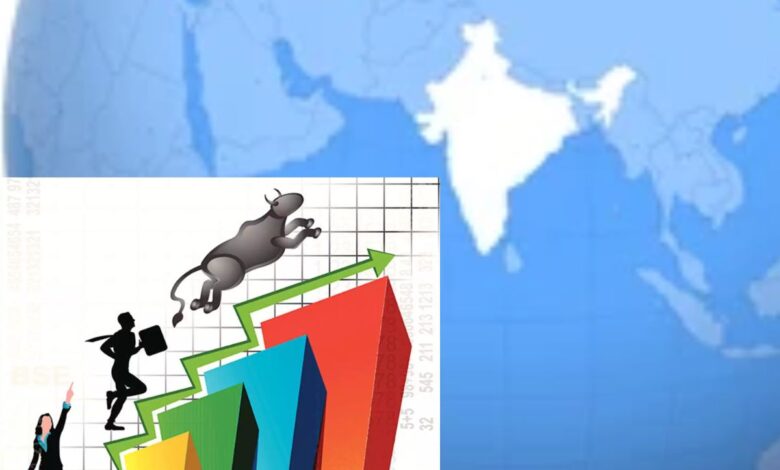Why Indian markets are the good bets of the world?

After years of underperformance, Indian markets are just now catching up with their global rivals, according to the creator of G Quants, Mr. Shankar Sharma, at the Business Standard BFSI Insight Summit 2022 in Mumbai. Every equity in the world, from Japan to Vietnam and Zimbabwe, has its day, and India is having theirs right now, according to Sharma.
People would put trust in India and Indian folks rather than trusting China and Chinese people.
India has a variety of variables working in its favor, prominently in a post-Covid world where beliefs have drastically gone down in the favor of China and Chinese enterprises. Using a cricket, for example, Sharma stated that the Indian economy and pitch were pretty flat, the ball was old, and the sun (for India’s economy) was shining brightly.
All these important factors worked in a noteworthy manner. Furthermore, India is admired for several characteristics.
The good boy attributes of Indian markets might seem like a loser for a while, but good boys always win.
From a historical standpoint, Sharma claims that the markets provided gross returns from 2010 when the entire world was emerging from the global financial crisis, and March 2020.
The Sensex was about 16,000 in January 2008 and is expected to reach 37,000 by February 2020. The index increased by 50% over approximately 13 years (in rupee terms), representing a 4 – 5% compounded annual growth rate. Throughout this period, even fixed deposits would have provided superior returns.

“Before Covid in 2020, Indian stocks had a negative return in dollar terms for over 12 – 13 years. The results have been strong since Covid. “This is a correction following a stretch of dismal results. “The markets are playing a game of cyclical catch-up. Markets are usually cyclical; we glamourize the good while ignoring the negative “Sharma said.
Is India seeing a silent bull market?
Earnings growth across all industries is the most crucial positive of India’s stealth bull market. Just at end of July, there were images from markets against a background of higher inflation, rising interest rates, and weak growth, all of which behaved like a scary blanket. However, the stock markets sustained.
The S&P500, the US market’s barometer, was down just 14.3 % from its top until July. Second, it is widely known that when the United States sneezes, developing markets suffer; because it is noted at the time, Indian markets were much stronger than US markets.
The Fed has raised the interest rate by 75 bps twice since July. The FED rate rose from 0.25 % in March to 3.75 % presently, an unprecedented increase in such a short period. The US market has taken a hit and has not decreased completely.
Despite three 75 bps rises in July, September, and November, it has risen again in October and is now at the same level as it was at the end of June!
Even experienced investors would have foreseen a mini-crash in response to a 225-basis-point rise in three months, with the prospect of an indeterminate number of more raises until inflation is contained (the Fed chairman mentioned last week).
What about the second premise, that when the United States sneezes, emerging countries like India suffer?
The Nifty has reached a new lifetime high on a monthly closing basis and is poised to rise further. This type of behavior occurs mainly during a bull market.
The media may or may not be in talks about a new or ongoing bull market, but stock prices – the final arbitrator – appear to be strong. We may call it a stealth bull market.
Why are the markets rising while the world is in such confusion?
Many say that this is a bear market rally – a counter-trend move during a continuing drop – since the market never falls in a straight line. This group believes that investors who are buying now and driving up prices are stupid and don’t know what they’re doing. They argue that assuming that high-interest rates would not have a detrimental impact on businesses is fallacious.
A slowdown is something that cannot be prevented completely since the US Fed has been talking tough and will not stop hiking rates until inflation returns to normal levels. As a result, the corporate slowdown would result in a large sell-off, because stock values follow earnings in the longer run.
What has changed this time?
Rising interest rates and the development of geopolitical stress influenced the United States, Europe, and certain Asian countries, but is India in a vulnerable situation? ‘It’s different this time,’ according to Sir John Templeton, one of the smartest and most successful investors, are the four most deadly words in investment.
But there are some differences. With hindsight, India’s stealth bull market is supported by diverse parameters. Earning across industries is one of them. Travel, for example, which has a large multiplier impact, is rising. Indian Hotels is one of the greatest winners from last year’s volatile market, having increased by 100%.
Cars, bikes, jewelry, watches, and high-end clothing are all selling briskly. As a result, the top gainers are Mahindra & Mahindra (51%), TVS Motor (68%), Eicher Motors (48%), and Raymond (183 %).
The second major aspect is the continuing and growing offtake of engineering and capital goods, which we are seeing after about a decade. This is being driven by investments in trains, roads, defense, and manufacturing. Not unexpectedly, Elecon Engineering (132%), Schaeffler (95%), CG Power Solutions (73%), Timken (53%), and Tube Investments (53%) were the top gainers last year (48 %).
The third key development has been a strong and rising interest in the defense industry with the implementation of a policy shift to promote local procurement while emphasizing imports. This is evident in the stock prices of Mazagon Dock Shipbuilders (203%), Garden Reach Shipbuilders (132%), Hindustan Aeronautics (96%), Cochin Shipyard (73%), and Bharat Electronics (58%), among others.

Finally, the fourth main driver of India has been a robust credit cycle, which has benefitted small private banks and non-banking financial enterprises with the combined effort of cleaning up public sector banks. Stocks are long-term captives to profit growth. However, stocks react to shocks with narratives of predicted gains in the near to medium term. In the case of India, we are seeing a mix of all of these factors: some entities showed robust profit growth and stocks with high predicted earnings.
The last line.
India has long been considered a well-behaved scholar in the school of the global economy, and the great Indian markets will reap the benefits of being that “good guy.” This explains why we have a hidden bull market despite a bleak economy. Hence, Indian markets are considered one of the best bets in the world.





